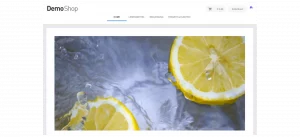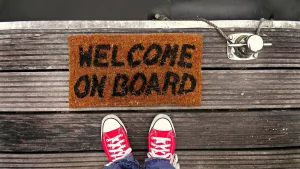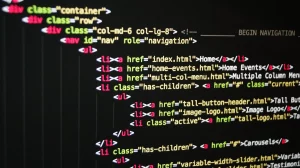Not every notification is equally relevant to all recipients. Not every approach is equally suitable for every customer segment. Therefore, for some push notifications, it makes sense to send them only to a selected group of recipients. This can be done with the help of segmentation.
Segmentation can be used for two major purposes:
- To target a specific message to only selected recipients for whom the content is relevant.
- To send a specific message to all recipients, but with a different approach depending on the segment to which the message belongs.
When designing notifications, you can thus ask yourself these questions:
- Is the message relevant to all recipients or should I send the notification only to specific segments?
- Does it make sense to design different notification variants to best target the message to the recipients?
Signalize allows selection of receivers according to the following basic properties, which can be combined to achieve the highest possible “hit rate” among receivers:
- Visiting frequency
- Type of buyer
- Time since the last order
- Average order value
- Time since the last visit
- Visitor is a newsletter subscriber
- Visitor is a returning visitor
- Visitor is customer
Application examples
RFM-Segmentation
RFM stands for Recency, Frequency, Monetary and is a well-known and proven form of grouping customers. The method is much easier to use than predictive models and already takes three properties into account. RFM groups can be formed from the segments “Time since last visit”, “Visit frequency” and “Average order value”:
| Zeit seit letztem Besuch | Besuchshäufigkeit | Durchschnittlicher Bestellwert* |
|---|---|---|
| Weniger als 1 Tag | Hoch = 5 und mehr Besuche | Mehr als 200 |
| 1 – 7 Tage | Mittel = 3 – 4 Besuche | 101 – 200 |
| 8 – 30 Tage | Niedrig = 2 Besuche | 41 – 100 |
| Mehr als 30 Tage | Nur ein Besuch | 0 – 40 |
*In the average order value, more than four characteristics are recorded. We recommend that you group the four groups together based on the breakdown in your own store itself.
Several groups can now be formed on the basis of the manifestations of these three characteristics. Four groups are formed especially often. Read below how to target the most frequently formed groups with Signalize segmentation.
Customer groups
Best customers
| Zeit seit letztem Besuch | Besuchshäufigkeit | Durchschnittlicher Bestellwert* |
|---|---|---|
| Weniger als 1 Tag | Hoch = 5 und mehr Besuche | Mehr als 200 |
| 1-7 Tage | Mittel = 3 – 4 Besuche | 101 – 200 |
| 8 – 30 Tage | Niedrig = 2 Besuche | 41 – 100 |
| Mehr als 30 Tage | Nur ein Besuch | 0 – 40 |
Valuable new customers
| Zeit seit letztem Besuch | Besuchshäufigkeit | Durchschnittlicher Bestellwert* |
|---|---|---|
| Weniger als 1 Tag | Hoch = 5 und mehr Besuche | Mehr als 200 |
| 1-7 Tage | Mittel = 3 – 4 Besuche | 101 – 200 |
| 8 – 30 Tage | Niedrig = 2 Besuche | 41 – 100 |
| Mehr als 30 Tage | Nur ein Besuch | 0 – 40 |
Expandable active customers
| Zeit seit letztem Besuch | Besuchshäufigkeit | Durchschnittlicher Bestellwert* |
|---|---|---|
| Weniger als 1 Tag | Hoch = 5 und mehr Besuche | Mehr als 200 |
| 1-7 Tage | Mittel = 3 – 4 Besuche | 101 – 200 |
| 8 – 30 Tage | Niedrig = 2 Besuche | 41 – 100 |
| Mehr als 30 Tage | Nur ein Besuch | 0 – 40 |
Inactive best customers
| Zeit seit letztem Besuch | Besuchshäufigkeit | Durchschnittlicher Bestellwert* |
|---|---|---|
| Weniger als 1 Tag | Hoch = 5 und mehr Besuche | Mehr als 200 |
| 1-7 Tage | Mittel = 3 – 4 Besuche | 101 – 200 |
| 8 – 30 Tage | Niedrig = 2 Besuche | 41 – 100 |
| Mehr als 30 Tage | Nur ein Besuch | 0 – 40 |
Similarly, the “buyer type” attribute provides a classification of all customers into these five categories based on order frequency and value:
- No purchase (default value)
- Just one purchase
- Unimportant customer
- Important customer
- Very important customer
Recommendations
Demonstrate your appreciation to your best, most valuable, and most important customers, respectively, by notifying them of exclusive offers or notifying them in advance of all other customers.
If customers are informed by e-mail in parallel with Web Push, it is advisable to coordinate the approach. Either refrain completely from addressing email newsletter recipients twice on one topic, or deliberately combine addressing via both channels. It is recommended to do this in a staggered fashion.
Important: In order for etracker to know who is a newsletter subscriber, newsletter links must be provided with the appropriate parameter (etcc_newsletter=1). Someone who has come to the etracker page once with this parameter will be permanently marked as a “newsletter subscriber”.
Are you still missing segments that you need to target your customers? Talk to us. We look forward to your suggestions.







